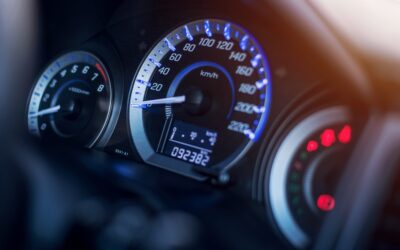If clutch control is completely new to you when you take your first driving lesson, it’s complexities may come as a little bit of a shock. Methodically learning to manipulate the three pedals (clutch, accelerator and brake) with the gear stick can seem very foreign and a challenge at first.
It will take time using the clutch in all road scenarios before it becomes a natural function. At first you will have to go through the processes consciously in your mind, but eventually it will become second nature – suddenly it will just click into place.
Some new learners who are wary of having to learn clutch control choose to learn to drive in an automatic car which can certainly simplify the overall learning experience, but it will also restrict the number and variety of cars you can drive after you pass your test, as you will only be certified to drive an automatic car.
Why is it necessary to change gear?
Moving up and down the gears allows the car to go faster or slower with less pressure on the engine. Imagine riding a multi-gear bicycle: In a low gear the wheels go around one revolution as the pedals go around one revolution; in a higher gear pedalling is easier because one revolution of the pedals may lead to two revolutions of the wheels. The same principle relates to a car engine.
How does a clutch work?
If you understand what happens when you depress the clutch it will make it easier to comprehend the processes needed.
In simple terms, a car engine is constantly spinning and constantly in contact with the wheels. In order to change gear the wheels need to be separated from the engine for a short time. In the car engine there are two clutch friction plates which, when the engine is running normally are held together. When you depress the clutch those two plates come apart and the wheels are separated from the engine. This allows you time to change gear.
Good clutch control
- The best time to start learning clutch control is when the car is at a standstill and you wish to move away.
- The clutch is the pedal on the extreme left at your feet in the driving seat. You need to be able to depress the clutch to the floor comfortably and without over-stretching your left leg, so always ensure, before putting on your seat belt that the seat is positioned correctly for your needs.
- Turn the engine on and, if the car is on a flat road take off the handbrake.
- Depress the clutch fully to the floor and select 1st gear using the gear stick.
- Give the engine a little more power by pressing down the accelerator: until the rev counter reads about 1500 rpm.
- Facilitate all the normal procedures for moving away and slowly raise the clutch.
- The car will start to move when the clutch has reached “biting point”. In the explanation of how a clutch works, above, the biting point begins to happen when the two friction plates separate.
- As the car moves forward you can smoothly take your foot off the clutch pedal and engage the accelerator.
As you gain further experience of clutch control you will need to complete more complex tasks such as hill starts which are required on your driving test. Practice makes perfect and just like other fundamental driving procedures, it will eventually “click” and you will not have to consciously think about carrying out each part of the process.
Check out our other articles for further advice on driving techniques and advice for learners. Also, you may be interested in our new driver car insurance quote for when ‘L’ plates are no longer needed.



